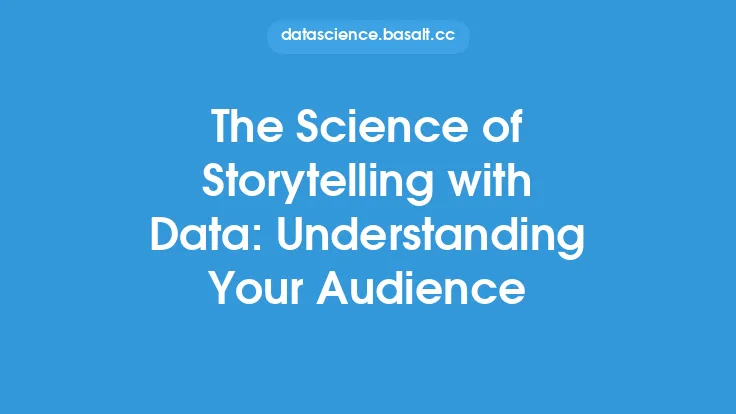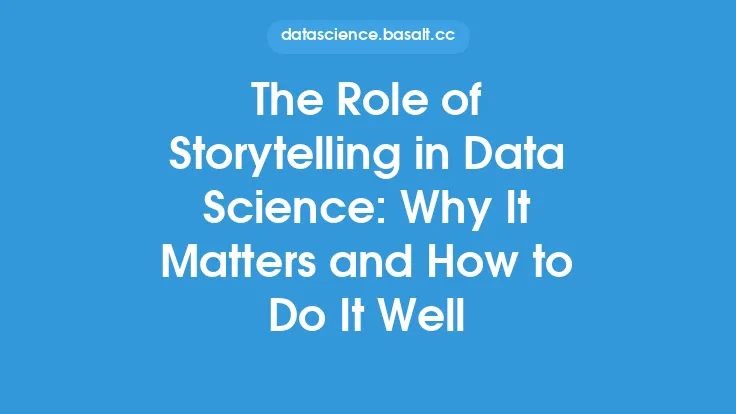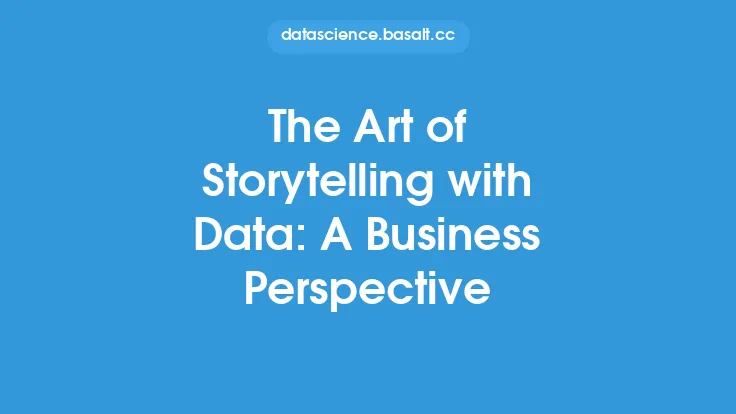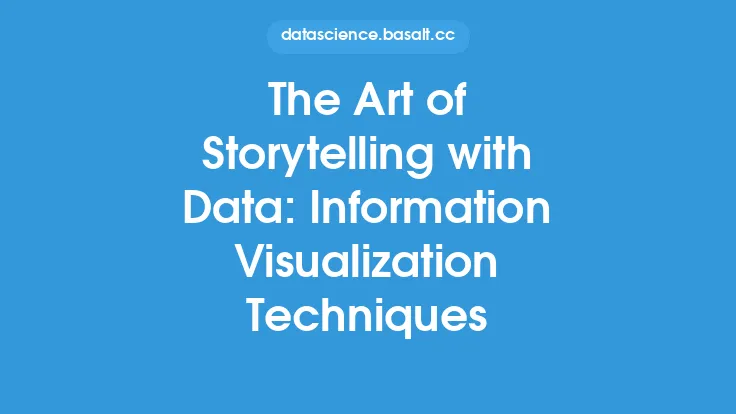Understanding the audience is a crucial aspect of effective data storytelling. It is essential to recognize that the audience is not a homogeneous group, but rather a diverse collection of individuals with varying levels of technical expertise, interests, and motivations. To craft a compelling data story, one must first understand the audience's needs, preferences, and biases. This involves developing a deep understanding of the audience's demographics, psychographics, and behavioral patterns.
Audience Analysis
Audience analysis is a systematic process of gathering and analyzing data about the target audience. It involves identifying the audience's characteristics, such as age, gender, occupation, education level, and socioeconomic status. This information can be obtained through surveys, focus groups, interviews, and online analytics tools. By analyzing this data, data storytellers can create buyer personas or audience profiles that help guide the development of their narrative. For instance, if the audience is predominantly composed of business executives, the data story may focus on the financial implications of the data, using metrics such as return on investment (ROI) and cost-benefit analysis.
Cognitive Biases and Heuristics
Cognitive biases and heuristics play a significant role in shaping the audience's perception of data. Cognitive biases refer to the systematic errors in thinking and decision-making that result from mental shortcuts or rules of thumb. Heuristics, on the other hand, are mental strategies that simplify complex problems, but may lead to inaccurate or incomplete conclusions. Data storytellers must be aware of these biases and heuristics, such as confirmation bias, anchoring bias, and availability heuristic, and design their narrative to mitigate their impact. For example, using visualizations that display multiple scenarios or outcomes can help counteract the availability heuristic, which leads people to overestimate the importance of vivid or memorable events.
Emotional Connection and Empathy
Establishing an emotional connection with the audience is vital for effective data storytelling. This involves creating a narrative that resonates with the audience's values, interests, and motivations. Data storytellers can use storytelling techniques, such as anecdotes, metaphors, and vivid imagery, to create an emotional connection with the audience. Empathy is also essential, as it allows data storytellers to understand the audience's perspective and tailor their narrative accordingly. By acknowledging the audience's concerns, fears, and aspirations, data storytellers can create a sense of shared understanding and purpose.
Information Processing and Cognitive Load
The way people process information is a critical aspect of data storytelling. Research has shown that people have limited cognitive resources, and excessive information can lead to cognitive overload. Data storytellers must therefore carefully manage the amount and complexity of information presented, using techniques such as chunking, filtering, and prioritization. Additionally, the use of visualizations, such as charts, graphs, and maps, can help reduce cognitive load and facilitate understanding. By leveraging the brain's visual processing capabilities, data storytellers can convey complex information in a more intuitive and accessible manner.
Cultural and Social Context
The cultural and social context in which data is presented can significantly impact its interpretation and reception. Data storytellers must be aware of the cultural nuances and social norms that shape the audience's perception of data. For instance, in some cultures, directness and assertiveness are valued, while in others, indirectness and politeness are preferred. Similarly, social norms around data sharing, privacy, and transparency can vary significantly across different contexts. By taking these cultural and social factors into account, data storytellers can create a narrative that is sensitive to the audience's values and beliefs.
Technical Considerations
From a technical perspective, data storytelling involves a range of tools and techniques, such as data visualization, statistical analysis, and machine learning. Data storytellers must be proficient in these technical skills, as well as have a deep understanding of the data itself. This includes knowledge of data quality, data governance, and data ethics. By leveraging these technical skills, data storytellers can create interactive and dynamic visualizations that facilitate exploration and discovery. Additionally, the use of storytelling frameworks, such as the hero's journey or the pyramid principle, can provide a structured approach to crafting a compelling narrative.
Best Practices and Recommendations
To effectively understand and engage with their audience, data storytellers should follow several best practices and recommendations. First, they should conduct thorough audience analysis to develop a deep understanding of the audience's needs and preferences. Second, they should be aware of cognitive biases and heuristics, and design their narrative to mitigate their impact. Third, they should establish an emotional connection with the audience, using storytelling techniques and empathy. Fourth, they should carefully manage cognitive load, using visualizations and other techniques to facilitate understanding. Finally, they should be sensitive to the cultural and social context in which data is presented, taking into account the audience's values and beliefs. By following these best practices and recommendations, data storytellers can create a compelling and effective narrative that resonates with their audience.





